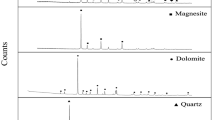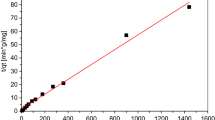Abstract
RECENT experiments conducted in our laboratories have shown that there is a correlation between the efficiency of organo-mercurial fungicides, used for the preservation of moist groundwood, and the concentration of certain sulphur compounds in the logs from which the groundwood is produced. These sulphur compounds are considered to arise from the reduction of inorganic sulphates, absorbed from salt or brackish water during storage, by halophilic strains of Desulphovibrio desulphuricans. These bacteria have been isolated from the sapwood of logs stored under natural conditions in sea water for a year. Chemical and microbiological studies have been made on samples of pulp, and on logs obtained from a number of Scandinavian groundwood mills after storing for different periods in fresh water, brackish water and sea water. In every case high sulphur contents, expressed as sulphidic and reducible1 sulphur, were found both in pulp samples containing biologically inactive fungicide and in the sapwood of the logs from which they had been made. Conversely, pulps having a high residual content of biologically active fungicide (and consequently a good record of freedom from fungal infection during storage) contained considerably less sulphidic and reducible sulphur, as did the corresponding logs. The latter logs and groundwood pulps came from mills where the wood is stored for 1–2 years in fresh water prior to grinding; the former from mills on or near the coast where the logs are kept in sea water or brackish water for similar periods of time. It has, in fact, been found that after only three months soaking of logs in sea water, mercurial fungicides are de-activated at once on addition to the resultant pulp. It has been shown in the laboratory that the de-activating property progresses farther into the heart of the log with increasing length of immersion.
This is a preview of subscription content, access via your institution
Access options
Subscribe to this journal
Receive 51 print issues and online access
$199.00 per year
only $3.90 per issue
Buy this article
- Purchase on Springer Link
- Instant access to full article PDF
Prices may be subject to local taxes which are calculated during checkout
Similar content being viewed by others
References
Sobolev, I., Bhargava, R., Geactinov, N., and Russell, R., Tappi, 39, No. 9, 628 (1956).
Booer, J. R., Ann. App. Biol., 31, 340 (1944).
Hägglund, E., “Chemistry of Wood”, 212 (1951).
Author information
Authors and Affiliations
Rights and permissions
About this article
Cite this article
BROWNING, B., RUSSELL, P., KINGSNORTH, S. et al. Inactivation of Organo-Mercurial Fungicides in Groundwood Pulp made from Logs stored in Salt Water, and the Possible Role of Sulphur Compounds. Nature 183, 1346–1347 (1959). https://doi.org/10.1038/1831346a0
Issue Date:
DOI: https://doi.org/10.1038/1831346a0
Comments
By submitting a comment you agree to abide by our Terms and Community Guidelines. If you find something abusive or that does not comply with our terms or guidelines please flag it as inappropriate.



